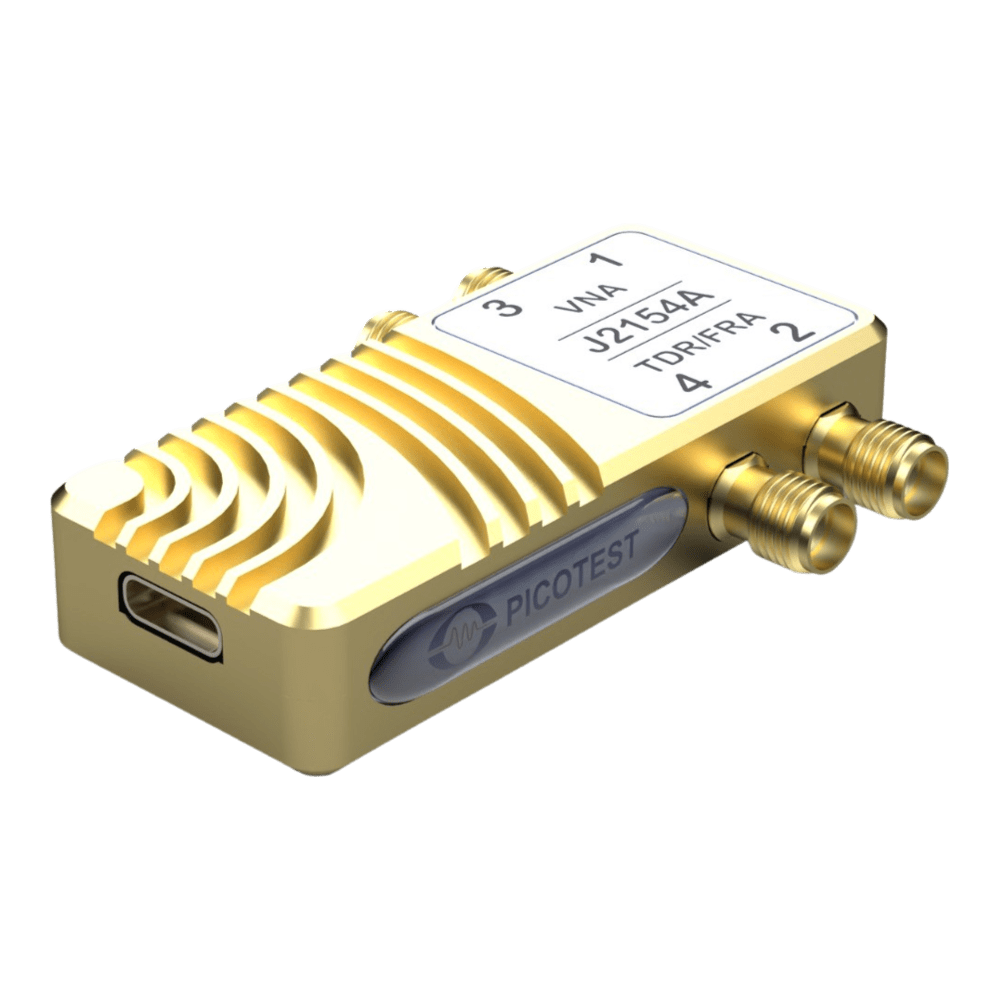
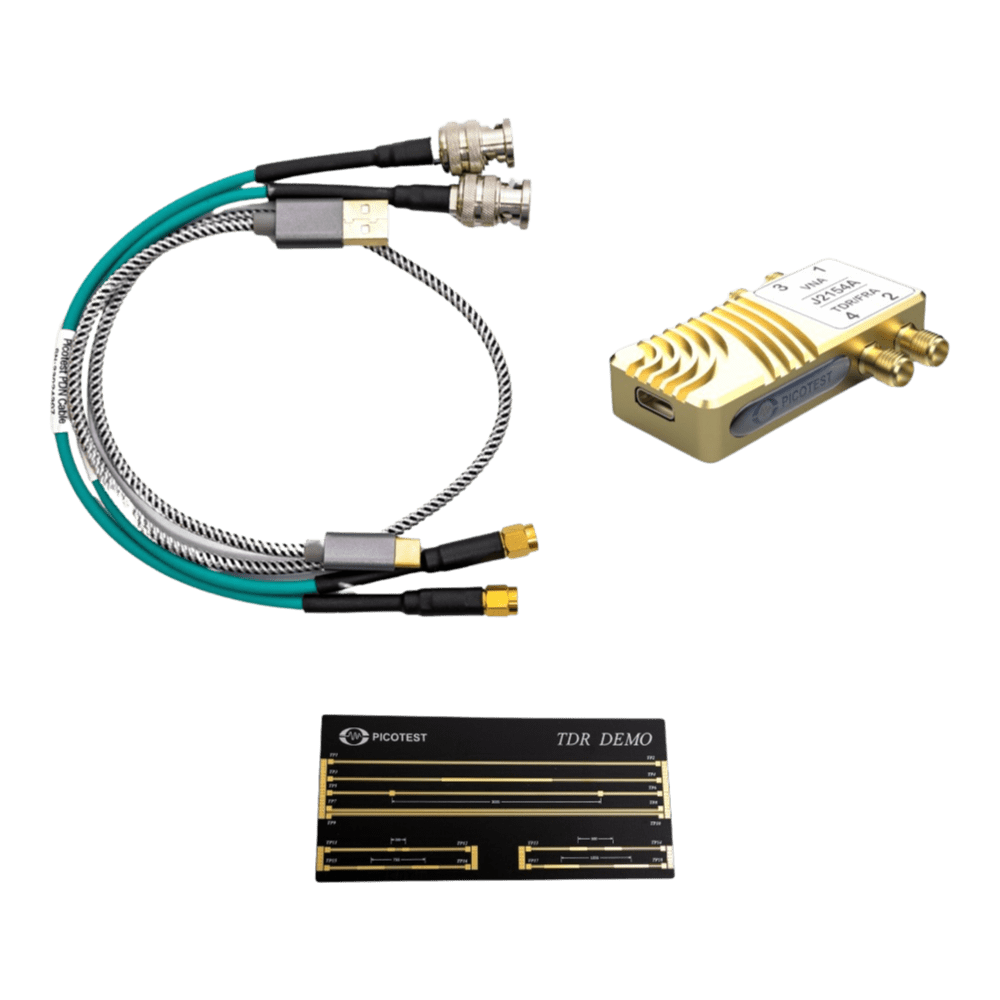
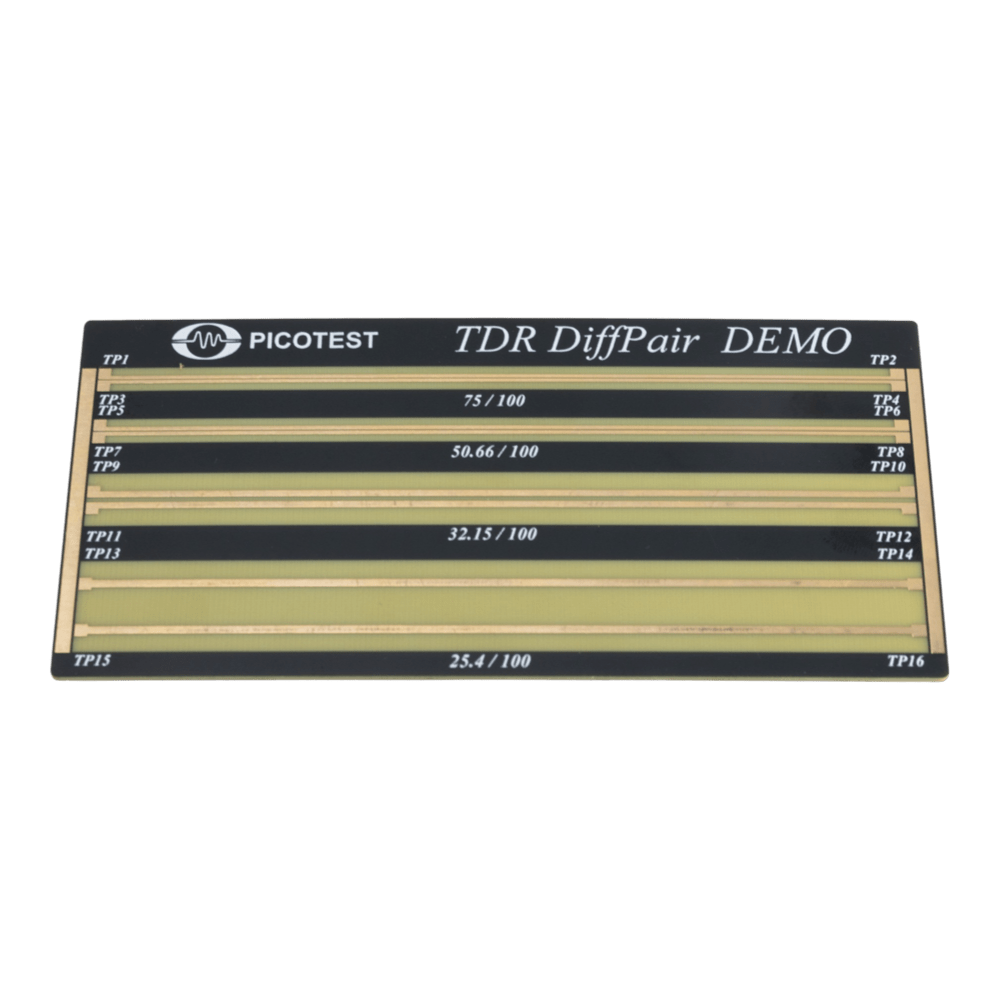
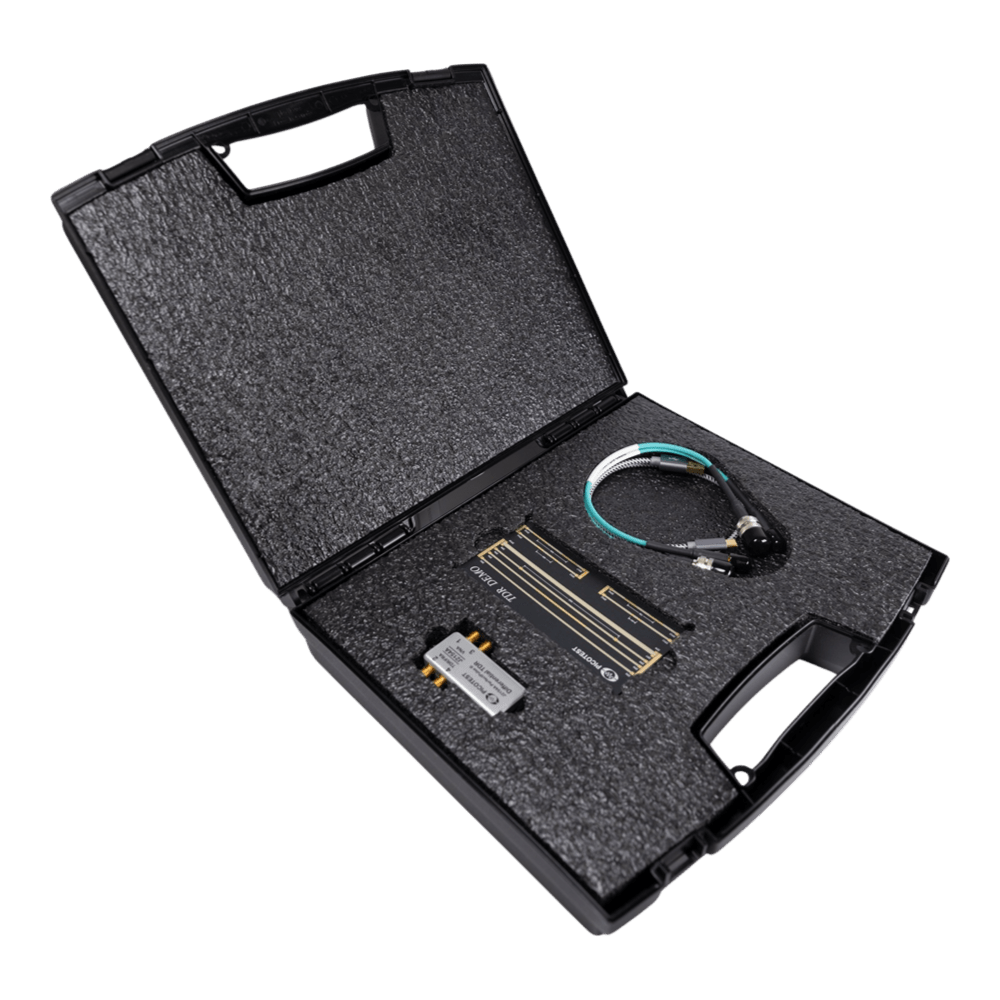
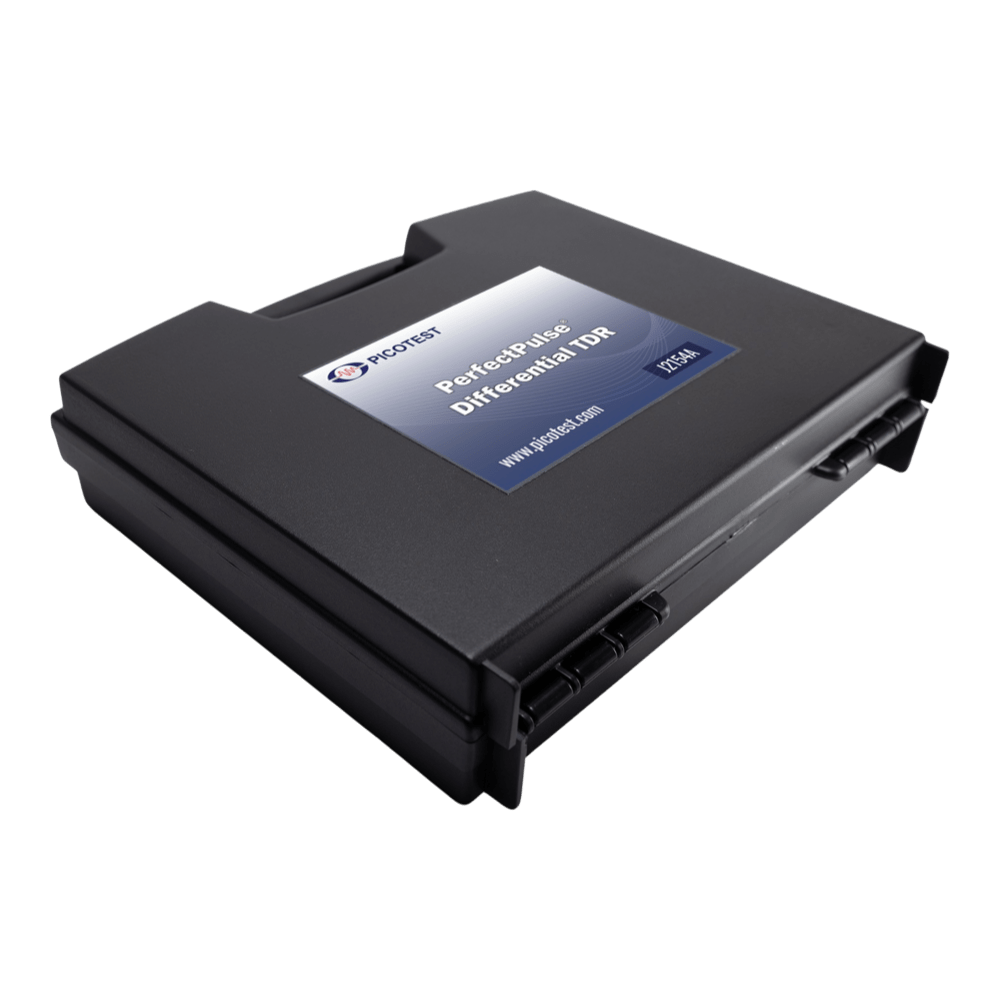
Key Features
Overview
Compatible with any 50Ω oscilloscope, the J2154A transforms basic test equipment into a comprehensive PCB trace analyser, cable tester, and impedance measurement system without the £20,000+ investment typically required for dedicated TDR instruments.
The internal 10.5GHz pulse generator and power splitter enable both single-ended and differential TDR measurements, making it ideal for modern high-speed digital designs requiring controlled impedance verification. Engineers worldwide rely on this tool for PCB coupon testing, signal integrity validation, and pre-production impedance verification across electronics development projects.Downloads
Why Engineers Choose The Picotest J2154A PerfectPulse® Differenzielles TDR
Cost-Effective TDR Solution
Instant Oscilloscope Integration
High-Resolution Impedance Detection
Overview
The J2154A revolutionises impedance testing by delivering sampling-grade TDR performance in a pocket-sized, USB-powered package costing a fraction of traditional instruments. This breakthrough enables signal integrity engineers to perform professional impedance measurements without the £15,000-£50,000+ investment typically required for dedicated TDR systems.
Where It Fits
- Single-Ended TDR P2105A TDR Probe Bundle
- Differential TDR P2103A Differential Probe
- Complete Solution TDR Measurement Systems
Why It Matters
| Feature | Why It's Important | What You Gain |
|---|---|---|
| 30ps Rise Time | Enables high-resolution spatial measurements | Detect impedance changes as small as 164 mils on FR4 |
| USB-C Power | Eliminates external power requirements | Portable testing capability for field and production use |
| Oscilloscope Integration | Leverages existing test equipment investment | Professional TDR without dedicated sampling instruments |
| Differential Capability | Modern designs require differential pair testing | Complete impedance characterisation for high-speed digital |
Wiring Quick-Start
| Host | Direction | Through | Device | Notes |
|---|---|---|---|---|
| Oscilloscope Ch1 | → | BNC-SMA Cable | J2154A Port 1 | TDR signal input/output |
| Oscilloscope Ch2 | → | BNC-SMA Cable | J2154A Port 3 | Differential mode (optional) |
| J2154A Port 2 | → | TDR Probe | Device Under Test | Signal injection point |
| J2154A Port 4 | → | TDR Probe | Device Under Test | Differential return (if used) |
| USB-C Port | → | USB Cable | 5V Power Source | 118mA typical, 130mA max |
Code Snippet
// Oscilloscope Math Setup for TDR Analysis // Configure for impedance calculation from reflection coefficient Math1 = 50 * (1 + Rho) / (1 - Rho) where Rho = (Ch1 - Ch2) / (Ch1 + Ch2)
// Time-to-Distance Conversion
Distance = (Time × c × √εr) / 2
// c = speed of light, εr = relative permittivity (~4.3 for FR4)Frequently Asked Questions
Have a Question?
-
How do I calibrate the J2154A for accurate measurements?
Calibration involves connecting known impedance standards (open, short, load) to establish measurement references. The process is simplified when using compatible TDR probes which include calibration procedures and reference impedance values for your specific test configuration.
-
Can the J2154A measure cable lengths and dielectric constants?
Yes, by analysing the time-domain reflections, you can calculate cable/trace lengths, characteristic impedance, and dielectric constants of PCB materials, making it valuable for materials characterisation and design validation.
-
What's included in the J2154A package?
Each J2154A includes the TDR module, Picotest TDR Demo Trace Board for learning and validation, USB-C power cable, two BNC-SMA 12″ PDN cables, and comprehensive documentation with one-year warranty coverage.
-
Is the J2154A suitable for production testing environments?
Yes, the compact design, USB-C power operation, and rapid measurement capability make it ideal for production line impedance verification, incoming inspection of cables/connectors, and quality control testing of PCB coupons and finished assemblies.
-
What types of measurements can I perform beyond basic TDR?
The integrated 10.5GHz power splitter enables frequency response analysis (FRA) for probe characterisation, vector network analysis (VNA) measurements for S21 insertion loss, and transmission line parameter extraction including dielectric constant determination.
-
How does the J2154A compare to traditional sampling TDR instruments?
The J2154A offers comparable measurement accuracy to sampling TDRs costing £15,000-£50,000+ while providing portability, USB power operation, and compatibility with existing oscilloscopes, making professional TDR capabilities accessible to more engineers.
-
Do I need special probes to use the J2154A effectively?
While the J2154A works with any 50Ω probes, optimal performance requires dedicated TDR probes like the Picotest P2105A (single-ended) or P2103A (differential) which provide proper impedance matching and minimal tip inductance for accurate measurements.
-
What's the spatial resolution for detecting impedance discontinuities?
The J2154A provides approximately 164 mil (4.16mm) resolution on FR4 substrates, enabling detection of small impedance variations caused by via transitions, connector launches, or PCB manufacturing tolerances.
-
Can I measure both single-ended and differential impedance with this instrument?
Yes, the J2154A supports both single-ended (typically 50Ω) and differential impedance measurements. Use connectors 1&2 for single-ended measurements, or connectors 1&3 with 2&4 for differential TDR analysis of high-speed digital pairs.
-
What oscilloscopes are compatible with the J2154A PerfectPulse TDR?
The J2154A works with any 50Ω oscilloscope that supports math expressions, including models from Tektronix, Keysight, Rohde & Schwarz, and other major manufacturers. Your oscilloscope provides the display and analysis capabilities while the J2154A generates the precision TDR signals.





